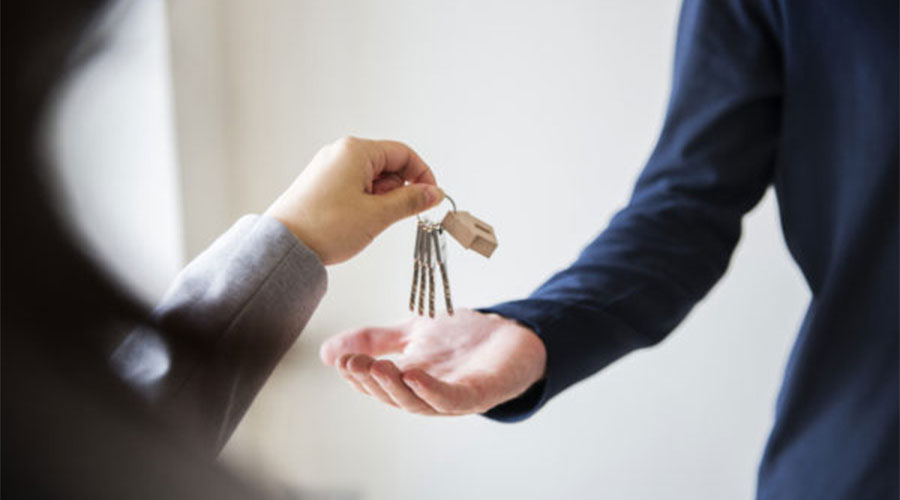Mark Twain once commented that people should buy land, as it wasn’t being produced anymore. While it may no longer be true for UAE in a literal sense, the spirit of the saying rings true. The Real Estate Sector in UAE had developed into an investor’s market, however with the influx of capital comes a tide of regulatory legislations. This article explores the real estate market in the UAE, as well as the law’s treatment of defective units in the real estate sector.
The Real Estate Market
While there are no express prohibitions against foreigners owning land in the UAE, the Emirates are empowered under the Federal Constitution of the UAE to pass their own laws for the regulation of property ownership. In Dubai, expatriate participation was not formally regulated till the 2006. However, with the introduction of the Law No. (7) of 2006 (“the Law”), Gulf Cooperation Council Nationals and Companies were given full ownership rights under Article 4 of the Law, while other nationals could only obtain freeholds or leaseholds upto 99 years over property zones specified under Regulation No. 03 of 2006. Such designated areas include prime investment zones such as The Palm Jumeirah, The World Islands, and Downtown Dubai, amongst other areas. Legislations regulating aspects such as escrow in 2007 (as provide for under Law No. 8 of 2007), were introduced for the protection of purchasers’ money of properties still under construction. The Dubai Land Department had also created the Interim Real Estate Register in order to further recognize and protect the rights of investors in properties under construction. Later developments in the sector, such as Decree No. 43 of 2013, further sought to protect investor rights by bringing rent control to the market and allowing foreign investors to retain tenancy rights while renting out their properties.
If you could see it, you’ve accepted it – Patent Defects in Real Estate
A ‘patent defect’ in law is one that is obvious enough to be discovered during a reasonable inspection of the premises. In such cases, the principle of caveat emptor, that is, let the buyer beware, applies. The fundamental application of this principle is – any defect in the property, moistness in the walls leading to chipped paint, uneven doors/floors, cracked electrical fittings, or any other defect, which would be noticeable in an inspection, the buyer cannot hold the seller liable after the purchase, as the law expects the buyer to do their due diligence before entering into an agreement and purchasing the property.
Seeping under the eyes – Latent Defects in Real Estate
However, certain defects may not be as easily discoverable, but may cause serious deterioration in the enjoyment of the concerned property. Such defects are only identifiable by experts, and may cause patent defects, while remaining undetected. Seepage stains on a roof may be a patent defect, but the underlying burst in the plumbing may be an unnoticed latent defect. Article 544 of UAE Federal Law Number 5 of 1985 on Civil Transactions (“UAE Transactions Law”), defines latent defects as ones unobservable via external inspection. A contractor is liable to the developer for latent defects under the construction contract, much as the developer is liable to the end purchaser under the property sale contract.
Legal Regime
Property transactions are made in contracts, and are governed by the law/rules that apply to contracts. The UAE Civil Transactions Law is the primary source of guidance to a wide array of real estate problems..
Article 237 of the UAE Civil Transactions Law, for example, permits the termination of a contract due to defects, even in the absence of a termination clause allowing the same in the contract. While an acceptance of such defects (in the case of patent defects, such acceptance may be construed as the acceptance of property while the defect subsisted) may bar the application of this right (to terminate a contract), which survives the death of the purchaser/affected party. Under the applicable rules, a property investor is responsible for identification of patent defects and cannot pursue liability for the same against the seller unless the seller tried to hide the defects. Further, a seller may be liable for latent defects i.e., which cannot be discovered by reasonable inspection, even after the property has been handed over to the purchaser.
Defects such as lower available space in the property than the space stipulated by a contract has been held by the Dubai Court of Cassation to be compensable in Appeal No. 452 of 2017.
Most contracts for construction and engineering projects are modelled after the International Federation of Consulting Engineers (FIDIC) Conditions of Contract for Construction, and as such, it is pertinent to keep in touch with certain key rights and liabilities pertaining to latent defects. Under the provisions pertaining to latent defects , contractors are liable to remedy defects caused due to the materials employed, or workmanship carried out in pursuance of the project. Defects raised by the purchaser within the Defects Notification Period must also be remedied at the contractor’s cost. Under such contracts, a contractor’s obligations generally terminate upon an issuance of the Performance Certificate by the employer. However, any unperformed obligations must still be completed post the issuance of the certificate. The determination of the nature and scope of unperformed obligations shall be done under the contract.
Decennial Liability – Protection against threatening defects and total collapse
Articles 880 to 883 of the UAE Civil Transactions Law govern ‘decennial liability’, which provide rights to employers/developers/purchasers against contractor/constructor/engineer/architect for the total or partial collapse of a building or any defects found in the building which threaten the stability or safety of the building. Where the architect does not supervise the construction of the property, but merely designs the building, they can only be held liable for design defects. Article 882 of the UAE Civil Transactions Law provides that such liability ranges for a period of 10 years, and cannot be subcontracted or lessened by means of contract. For the right holders, it is important to raise a claim within three years of the collapse of the building or the discovery of the threatening defect. Decennial liability promotes a strict liability standard, which implies that the affected party must not prove wrongdoing on part of the other party, but rather simply display the effect of such wrongdoing, such as a collapse of a building, or the presence of a threatening defect. However, the same is not an absolute liability standard, giving builders the defence that the injury was caused due to extraneous causes, rather than due to the design or construction of the building.
The Dubai Court of Cassation in Case No. 150 of 2007, highlighted three important principles relating to decennial liability–
- Contractors/Engineers are liable for compensation to the party to whom the property was handed over;
- Decennial Liability does not extend to affected third parties who were not privy to the contractual agreement (such as affected property owners who share adjacent buildings that may be affected due to the collapse of the primary building); and,
- Contractors cannot be held liable for defects during the period of construction, as decennial liability arises only after the handover of the property.
The Abu Dhabi Court of Cassation in Case No. 293 of Judicial Year 3 reaffirmed that decennial liability only comes into play after the handover of the property. In Case No. 721 of the same year, the Court also stated that “Compensation may also be awarded for loss of opportunity of the building owner to exploit the land and have the benefit of it by reason of non-performance by the contractor without justification, of his obligation arising out of the muqawala (works) contract made between them or by reason of his defective performance whereby it becomes impossible to make use of the building.”
It is pertinent to note that decennial liability provides a complex challenge when it comes to the prevalence of major renovations and multiple owners, as previous builders may claim that the reconstruction/reworking the original building structure represents a break in the chain of causation, which is an extraneous cause to any injury suffered/likely to be suffered. In such cases, expert evidence plays a crucial role in factually determining the liability of parties vis-à-vis each other.
Limitation Periods for Raising Real Estate Defects Disputes
Once a defect comes to the notice of the affected party, Article 883 of the UAE Civil Transactions Law (Law No. 05 of 1985) mandates that claims for compensation be made within 3 years of the discovery. The UAE Federal Supreme Court in Case No. 211 of 2019 in the Civil Circuit refused to hear a property dispute as the case was time-barred under Article 883.
Losses suffered due to defects may be claimed against the responsible party within 15 years under Article 473 of the UAE Civil Transactions Law. However, Article 95 of the UAE Commercial Transactions Law, Law No. 18 of 1993, shortens the limitation period to ten years for commercial contracts.
The recent developments in the Real Estate jurisprudence suggest efficient implementation of the Codes. Investors and Constructors alike are advised to acknowledge the legal framework governing their projects, and assessing their rights and liabilities before participating in the market. Owners should be aware that generally, only latent defects and threats to the stability and safety of the building may still be claimed against the property builder once the same has been handed over to the owner.

